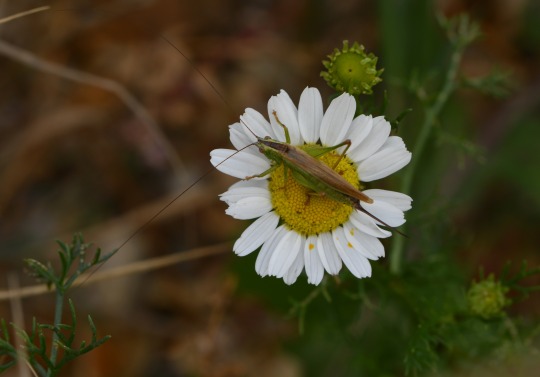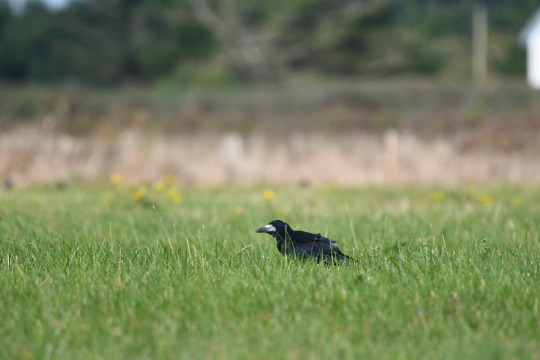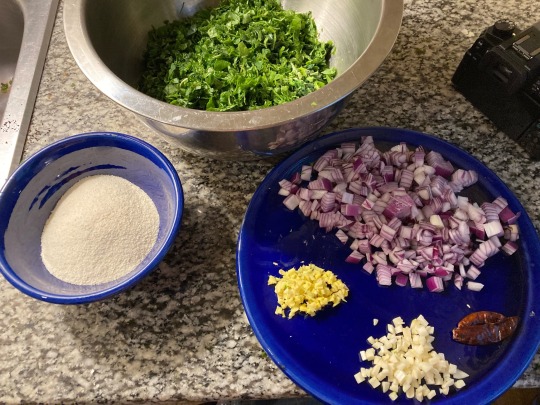#Common sowthistle
Explore tagged Tumblr posts
Text

ノゲシを摘んでコップに挿す(3月26日)
#Sonchus oleraceus#common sowthistle#sow thistle#mlecz zwyczajny#mlecz warzywny#flowers#kwiaty#花#japan#野芥子#ノゲシ
2 notes
·
View notes
Text

Common Sowthistle - Serralha (Sonchus oleraceus)
Lisboa/Portugal (16/03/2024)
[Nikon D850; AF 105mm Micro-Nikkor F2,8 with Circular Flash Nissin MF 18; F16; 1/250s; 400 ISO]
9 notes
·
View notes
Text








21/09/24-Orach, my first Clouded Yellow of the year, Long-winged Conehead on chamomile, view, Linnet, Rook and dock at Milford-on-Sea and narrow leaf blue eyed grass in the garden. I am ecstatic to see the Clouded Yellow and another striking paler one on the walk, a sensational, exquisite and well coloured species that was the last one I could add to my year list it's the second latest in a year I've first seen one or any butterfly species so I wasn't sure if I'd see one this year. I'm thrilled to have seen forty three butterfly species this year, my joint third highest ever in a challenging year for them.
Other highlights on the great walk at the beautiful Milford-on-Sea were Small White, Large White, Peacock, Common Blue, Long-winged Conehead, Buzzard, Rook, Feral Pigeon, Rock Pipit, Wheatear, Stonechat, Linnets, Swallow, Sandwich Terns including diving into the water close to shore, Black-headed Gull, beautiful sand spurrey, sea rocket, ragwort, sowthistle, thrift, creeping thistle, white campion, hogweed seed heads and an (albeit knocked over) parasol mushroom. At home there were some great sightings today with the Chiffchaff coming into the garden for the second day running and landing on a sunflower, Blue Tit, Goldfinch including young, Starling, Collared Dove, Jackdaws, Large White, Speckled Wood and cranefly including on a rose.
#photography#milford on sea#clouded yellow#butterflies#common blue#sowthistle#flowers#2024#new forest#milford-on-sea#coast#england#uk#world#wheatear#sandwich tern#rock pipit#stonechat#small white#large white#peacock#walking#outdoors#nature#europe#hampshire#autumn#summer
10 notes
·
View notes
Text

[ID: A dish of greens garnished with red onion and red chili, with a flatbread in the background. End ID]
Uttar Pradesh mix saag with wild greens
The Hindi "साग," "sāg" (Urdu: "ساگ") is a word meaning "potherb, vegetable, greens." It is ultimately derived from the Sanskrit "शाक" ("śāka"), which also has reflexes in the Bengali "শাক" ("śak") and the Punjabi "ਸਾਗ" ("sāg"), among others.
Saag dishes are made from fried or boiled green herbs and vegetables, flavoured with aromatics, spices, and chili peppers. They are typically named for the type of greens used: for example, सरसों का साग ("sarsõ kā sāg") is made with sarson, or mustard greens; बिच्छू बूटी का साग ("bicchū būṭī kā sāg") is made with the greens of stinging nettles.
This recipe is for an Uttar-Pradesh-style "mix saag," which is of course made with a mixture of different greens. Most commonly included are spinach (पालक, palak), mustard greens (sarson or राई, rāī), lamb's quarters (बथुआ, bathua), fenugreek leaves (मेथी, methi), and chickpea leaves (चने के पत्ते, channa ke patte). Chilis, ginger, garlic, and coriander power make this dish complex, light, and fresh, while gur (jaggery) adds sweetness; corn flour, ghee, and mustard oil add richness of texture. Mix saag is often eaten with makka ki roti, a corn (maize) flatbread.
The greens for this recipe can be found at a south Asian grocery store, or you can use any mildly flavored greens. I used locally foraged lamb's quarters, garlic mustard, plantain, chickweed, common sowthistle, prickly sowthistle, and dwarf mallow.
Recipe under the cut!
Patreon | Paypal | Venmo
Ingredients
200g greens
1 red onion, diced
1 chunk (10g) ginger, minced
2-3 cloves (10g) garlic, minced
1 Tbsp vegetarian ghee, or non-dairy margarine
1 Tbsp mustard oil
2 dried red chilis, or 1 tsp Kashmiri chili powder
2 fresh green chilis, sliced
1 tsp coriander powder (optional)
40g (small handful) maize flour, to thicken
1-2 tsp jaggery, to taste
Salt to taste
Sliced red onion, to garnish


Instructions
Wash and chop greens. Boil in salted water for about 10 minutes, until tender. Drain. (This liquid can be used to make soup later, if it's not too bitter.)
Heat ghee and mustard oil in a pot on medium high. Add onion and cook for 5-8 minutes, until translucent.
Add garlic, ginger, and dried and fresh chilis and cook for about a minute, until fragrant.
Add coriander powder and chili powder and fry for 30 seconds, until fragrant.
Add jaggery and heat for a minute, until the sugar melts.
Add greens and mix to combine. Cook until wilted. Add water to cover and bring to a simmer.
Add corn flour and salt and mix until combined. Continue to simmer for 5 minutes to allow flavors to meld, or until desired consistency is reached. Taste and adjust salt.
Garnish with sliced red onion and serve hot with roti.
175 notes
·
View notes
Text
While reading I came across the sentence 「箱館戰爭打得如火如荼時。。。」 and misread 荼 as 茶 at first glance, thinking ah yes, like fire and, uh, tea? Well I guess it's dangerous while boiling, sure...
The real phrase:
如火如荼 rúhuǒ rútú / like wildfire, unstoppable
Pleco and the MOE dictionary give the many definitions of 荼 as "thistle, common sowthistle (Sonchus oleraceus), bitter (taste), cruel, flowering grass in profusion". Other 成語 and words with 荼 generally also have to do with suffering (荼毒生靈 / torment the people, 食荼臥棘 / share the hard life of the common people).
#after having had 苦茶 once (and never again) i will admit the bitter vegetable is a good representative of the agonies of life#mandarin#chinese#traditional characters#word of the day
34 notes
·
View notes
Text
Plants that grow in both Canada and Finland
* = not native to at least one of the two countries
Acer negundo (box elder)*
Achillea millefolium (common yarrow)
Alliaria petiolata (garlic mustard)*
Alopecurus aequalis (shortawn foxtail)
Anemone hepatica (common hepatica)
Arctagrostis latifolia (wideleaf polargrass)
Argentina anserina (common silverweed)
Artemisia vulgaris (common mugwort)*
Bellis perennis (lawn daisy)*
Berteroa incana (hoary alyssum)*
Betula pendula (silver birch)*
Bryum argenteum (silvery bryum)
Calamagrostis lapponica (Lappland reedgrass)
Calla palustris (marsh calla)
Campanula uniflora (arctic bellflower)
Cannabis sativa (cannabis)
Capsella bursa-pastoris (shepherd's-purse)
Carex adelostoma (circumpolar sedge)
Carex tenuiflora (sparse-flowered sedge)
Ceratodon purpureus (redshank)
Chamaenerion angustifolium (fireweed)
Chenopodium album (common lambsquarters)
Cirsium arvense (creeping thistle)*
Convallaria majalis (European lily of the valley)*
Convolvulus arvensis (field bindweed)*
Corallorhiza trifida (early coralroot)
Cornus suecica (dwarf cornel)
Crocus vernus (spring crocus)*
Cystopteris fragilis (fragile fern)
Datura stramonium (jimsonweed)*
Drosera rotundifolia (round-leaved sundew)
Dryopteris filix-mas (male fern)
Echium vulgare (viper's-bugloss)*
Empetrum nigrum (black crowberry)
Equisetum arvense (field horsetail)
Eriophorum scheuchzeri (Scheuchzer's cottongrass)
Festuca vivipara (viviparous sheep's-fescue)
Fragaria vesca (wild strawberry)
Galium trifidum (three-petal bedstraw)
Geranium pratense (meadow crane's-bill)*
Geranium robertianum (Herb Robert)
Geranium sylvaticum (wood cranesbill)*
Glechoma hederacea (ground-ivy)
Gymnocarpium dryopteris (northern oak fern)
Helianthus annuus (common sunflower)
Humulus lupulus (common hops)
Hyoscyamus niger (black henbane)
Impatiens glandulifera (Himalayan balsam)*
Juniperus communis (common juniper)
Lathyrus japonicus (seaside pea)
Leucanthemum vulgare (oxeye daisy)*
Lupinus polyphyllus (large-leaved lupin)*
Malus baccata (Siberian crabapple)*
Malus domestica (apple)*
Melilotus officinalis (yellow sweetclover)*
Monotropa hypopitys (pinesap)
Oxalis corniculata (creeping woodsorrel)*
Papaver somniferum (opium poppy)*
Petasites frigidus (Arctic sweet coltsfoot)
Phragmites australis (common reed)
Picea abies (Norway spruce)*
Pinus sylvestris (Scots pine)*
Poa arctica (Artic bluegrass)
Prunella vulgaris (common selfheal)
Pteridium aquilinum (common bracken)
Ranunculus lapponicus (Lapland buttercup)
Rosa acicularis (prickly wild rose)
Rubus idaeus (red raspberry)*
Salix lanata (woolly willow)
Saxifraga rivularis
Sceptridium multifidum (leathery grapefern)
Silene dioica (red campion)
Sonchus asper (prickly sowthistle)*
Sorbus aucuparia (European mountain ash)
Tanacetum vulgare (tansy)*
Taraxacum officinale (common dandelion)*
Trifolium pratense (red clover)*
Trifolium repens (white clover)*
Ulva intestinalis (gutweed)
Vaccinium myrtillus (European blueberry)
Vaccinium oxycoccos (bog cranberry)
Vaccinium uliginosum (bog bilberry)
Vaccinium vitis-idaea (lingonberry)
Veronica persica (bird's-eye speedwell)*
Veronica verna (spring speedwell)*
Viola palustris (marsh violet)
Viola tricolor (wild pansy)*
* = not native to at least one of the two countries
22 notes
·
View notes
Text
Today's Haiku with Picture 460

Over the winter
Bloom happily
Harunonogeshi
冬を越え
嬉しく咲ける
ハルノゲシ
Asteraceae. edible. Common sowthistle.
(2023.03.11)
6 notes
·
View notes
Text
10 people i'd like to get to know better tag game!
tagged by @sasheneskywalker
last song: GTG by Freddie Dredd on repeat because im fucking obsessed.
favorite color: depends on the day but i love dark reds
last book: Currently reading Hunger Pangs by the resident @/thebibliosphere
last game: Wuthering Waves, im not burnt out on that game and im trying to catch up on story and leveling so i can do combat events lmao orz
last show: ... do youtube shorts count? uhhhh. I don't watch TV. The last time I really watched a show was probably more than 8 years ago.
sweet/spicy/savory: spicy. I need more peppers in my life i just keep forgetting about them orz
relationship: engaged haha. Technically long distance atm
last thing i googled: common sowthistle (ID'd with seek). was doing the yard today and pulled out a bunch of these guys from the front lawn. Love them a lot <3 but my neighbors do not so they had to be sacrificed to my leaf mulch piles.
tags: @spellwell @melodyofthevoid @ hmm hmm idk i dont know who's up to doing these tbh. im trying to keep it dc-ish adjacent (lol mel) because uhh that seems to be my blog direction but @ whomever tbh
blank below the cut because this is kinda a pain in the ass
tagged by
last song:
favorite color:
last book:
last game:
last show:
sweet/spicy/savory:
relationship:
last thing i googled:
1 note
·
View note
Text


Common Sowthistle
10•17•2021
3 notes
·
View notes
Text
FOTD Sth.Maroubra Green 30th December
For Cee’s FOTD challenge for December 30th There are almost 900 species of Eucalypts in Australia. Living trees, dying leaves, daisy stalks dry as dust. Notice the yellowed leaves. Common sowthistle with leaf litter. Eucalypts shed leaves continuously, 🍃 thus appearing green at all times. There are always dry dead leaves in the garden and Parks. Common sowthistle- filtered for…

View On WordPress
0 notes
Text
I walk around our property looking at the different “weeds” growing. I’m new to learning about herbalism so I use an app to find out what a lot of things are. But I also do research to make sure the app is telling me correctly.
These are some of the plants that the app says we have here:
Thistle
Curly Dock
Carolina Geranium
Hairy Buttercup
Spiny Sowthistle
Common Vetch
Lesser Swinecress
Horse weed
Pennsylvania Everlasting
Chinese Bushclover
Groundseltree
Japanese Honeysuckle
Sticky Chickweed
Prickly Lettuce
Tiny Bluet
Corn Salad
Birdeye Speedwell
Wild Garlic
Purple Dead-nettle
Dandelion
Creeping Buttercup
Henbit Deadnettle
Roundleaf Greenbrier
Evening Primrose
Blue Mistflower
Purple False Foxglove
Broomsedge Bluestem
Wrinkledleaf Goldenrod
Pasture Thistle
Virginia Creeper
Trumpet Vine
White Heath Aster
White Clover
Large leaf Pennywort
American Pokeweed
Dogfennel
But it seems like every day there’s something new popping up.
3 notes
·
View notes
Note
FWIW, I saw the dandelion post and immediately said "mmm dats not dandelion" as I scrolled but plant taxonomy and their "common" names can be really dumb and confusing for laypeople (calendula is called pot marigold but isnt a marigold? 'kay...) and noticing the nuances is a skill, just like how people think Huskies and wolves look the same lmaaoo like people think goldenrod is ragweed and causing their allergies pls no it is a beautiful bb to be appreciated! tldr I am plant nerd I get it
Yeah juggling common names and botanical ames and how plants are related in general gets very confusing even for plant folks! I know I never quite know what's up half the time even as someone who has a bizarre interest specifically in weeds. Like I had seen sowthistles about and knew they were an Asteraceae weed but did not actually know the common name for them until I dug about to Id the second "dandelion" in that post (I was able to find it almost immediately just by typing "dandelion look-alikes with perfoliate leaves" aka knowing botany terms helps so much)
But I saw someone had tagged that post "who cares they're yellow blooming weeds just call them dandelions and don't ruin anyone's fun" and that makes me feel bummed out because to me, weed/general plant identification is extremely fun. Don't ruin my fun by lumping every single weed under the same exact name.
Plant blindness is a big ole issue! And it's not just blindness it's that even when folks see and care about the plant, they don't care enough about them as individuals to think they are worth learning about. They're all just yellow blooming weeds, blurred one into the next.
Which makes me sad. And I'm not sure how to combat that without risking making people feel stupid when you correct them or assume they have minimal knowledge.
26 notes
·
View notes
Text

苦菜 / Kucai (Chinese sowthistle stir-fry)
Common sowthistle (Sonchus oleraceus) is a hardy flowering plant in the family Asteraceae (alongside, for example, daisies, sunflowers, and dandelions). It is native to Europe and West Asia, but appears throughout the Americas, East Asia, Australia, and New Zealand. It is a common weed in recently disturbed soil, and sometimes pops up among and competes with cultivated crops.
Sowthistle is eaten as a bitter green in Chinese cuisine. The word "苦菜" (Mandarin Pinyin: kǔcài), from "苦" "kǔ" "bitter" + "菜" "cài" "vegetable" or "greens," is often used to refer to sowthistle—though it may also designate other bitter greens, including garlic chives.
This recipe prepares sowthistle as Chinese bitter greens are generally prepared: blanched in salted water, then fried with ginger and garlic. The sweetness and pungency of the aromatics round out the earthy bitterness of the sowthistle, making a dish that's excellent as a side with soup or rice. Here, I used it to top a fried tofu sandwich with a soy-sesame-ginger sauce.
Recipe under the cut!
Patreon | Paypal | Venmo
Identifying common sowthistle
Young plants grow from a rosette of waxy leaves with deep triangular lobes. Leaves growing from the stem are alternate (one leaf per node), simple (not divided into leaflets) and pinnatifid (divided, but the divisions do not go all the way to the midrib). Leaves have hairless midribs and clasp the stem at their base.
Stem is hairless and mostly unbranched, except near the apex. Stems terminate in clusters of flowers which are yellow when in bloom. Mature leaves and stems produce a white, milky latex when broken; not toxic, though quite bitter.





Young leaves, top two; mature plants, last three
If the leaf margins are covered in sharp spikes, you may be looking at spiny sowthistle. This plant is also edible, though it may not be worth the trouble to remove the spines to eat the mature leaves. Younger leaves, which generally form towards the center of the rosette, have softer spines and are edible without processing.


Young prickly sowthistle, left; mature prickly sowthistle, right
Common sowthistle may also be confused with common groundsel. Groundsel exudes a clear, not a milky, sap when broken, and its leaves are more deeply lobed. It is more densely branched and its leaves are waxier. Common groundsel is toxic and should not be consumed in large quantities.

Common groundsel
Ingredients:
Large bunch common sowthistle leaves (Sonchus oleraceus), preferably young
1/2-inch chunk (5g), scrubbed and thinly sliced
2 cloves garlic, peeled and sliced
Neutral oil, to fry
Toasted sesame oil, to top
Salt, to taste
Instructions:
1. Wash leaves thoroughly in a bowl filled with water. Pull leaves out to allow dirt to sink to the bottom. Repeat.
2. Boil leaves in salted water for about 10 minutes, until tender.
3. If desired, soak in cool water for 1-3 hours to remove some of the leaves' bitterness.
4. Heat oil in a wok or frying pan on medium-high. Fry ginger and garlic for 30 seconds, until fragrant. Add leaves and fry a minute or two.
5. Remove from heat and stir in sesame oil. Taste and adjust salt. Add a dash of mirin or rice vinegar to balance the bitterness, if desired.
56 notes
·
View notes
Text




Осо́т огоро́дный (лат. Sónchus oleráceus) — однолетнее травянистое растение семейства Астровые, или Сложноцветные (Asteraceae).
Молодые листья можно использовать для приготовления супов, щей, салатов. Для удаления из них горечи — вымачивают в солевом растворе 25—30 минут. Можно употреблять и корни осота — варёные они напоминают топинамбур. Народные названия растения: молочник, желтушник, зайчик, молочак, заячий салат.
Sonchus oleraceus is a species of flowering plant in the tribe Cichorieae of the family Asteraceae, native to Europe and Western Asia. It has many common names including common sowthistle, sow thistle, smooth sow thistle, annual sow thistle, hare's colwort, hare's thistle, milky tassel, milk thistle. and soft thistle
1/55A Woodlands Crescent, Browns Bay, Auckland 0630
7PPR+HHM Auckland
-36.7135250, 174.7414110
0 notes
Text
Plants that grow in both Italy and Japan
* = not native to at least one of the two countries
Achillea millefolium (common yarrow)*
Artemisia vulgaris (common mugwort)
Bidens pilosa (hairy beggarticks)*
Bryum argenteum (silvery bryum)
Capsella bursa-pastoris (shepherd's-purse)
Chenopodium album (common lambsquarters)
Commelina communis (Asiatic dayflower)*
Eleusine indica (goose grass)
Geranium robertianum (Herb Robert)*
Helianthus annuus (common sunflower)*
Houttuynia cordata (chameleon plant)*
Leucanthemum vulgare (oxeye daisy)
Monotropa hypopitys (pinesap)
Nandina domestica (heavenly bamboo)*
Oxalis corniculata (creeping woodsorrel)*
Papaver somniferum (opium poppy)*
Phragmites australis (common reed)
Phytolacca americana (American pokeweed)*
Pontederia crassipes (common water hyacinth)*
Potentilla indica (mock strawberry)*
Prunella vulgaris (common selfheal)
Pteridium aquilinum (common bracken)*
Robinia pseudoacacia (black locust)
Setaria viridis (green bristle grass)
Sonchus asper (prickly sowthistle)
Taraxacum officinale (common dandelion)*
Trentepohlia aurea (orange rock hair)
Trifolium pratense (red clover)*
Trifolium repens (white clover)*
Veronica persica (bird's-eye speedwell)*
1 note
·
View note
Text
Today's Haiku with Picture 342

How cold
Grow defiantly
It's Nogeshi
寒さなど
ものともせずや
ノゲシかな
This grass from the Asteraceae family can be used in salads like dandelions. Harunogeshi.
Common sowthistle Sonchus oleraceus
(2022.12.25)
5 notes
·
View notes